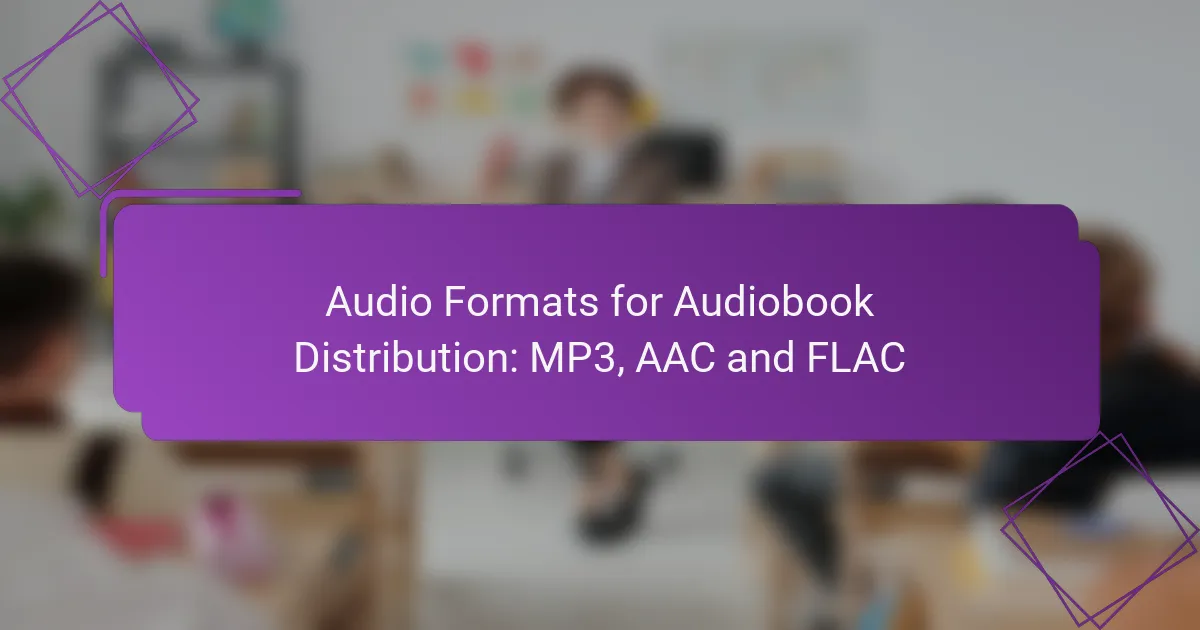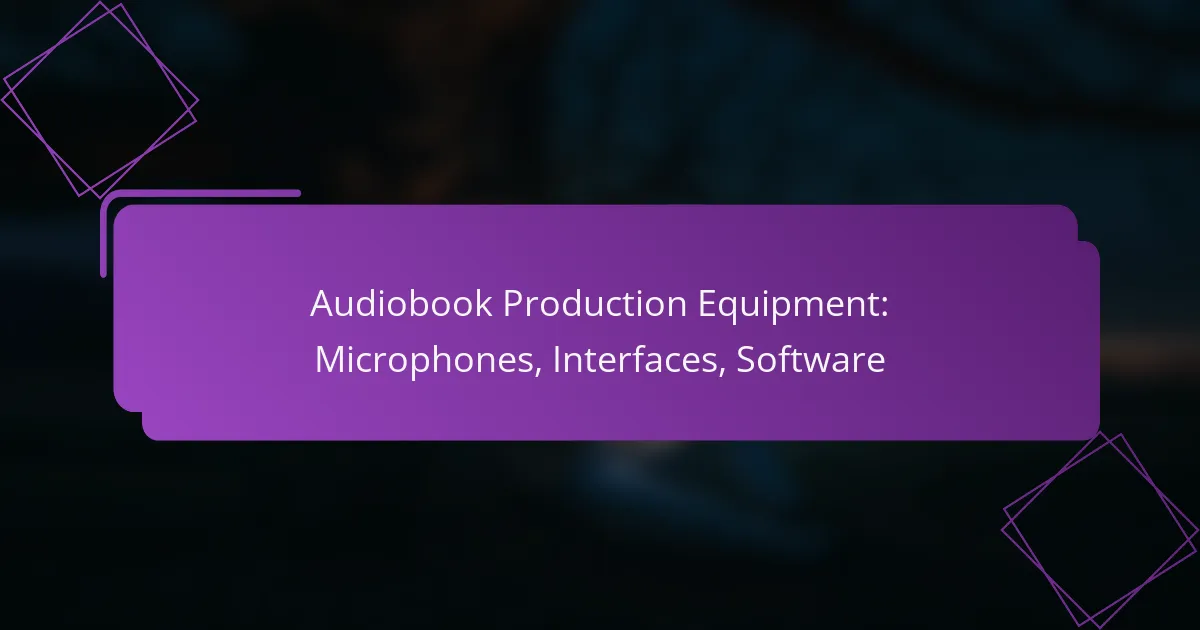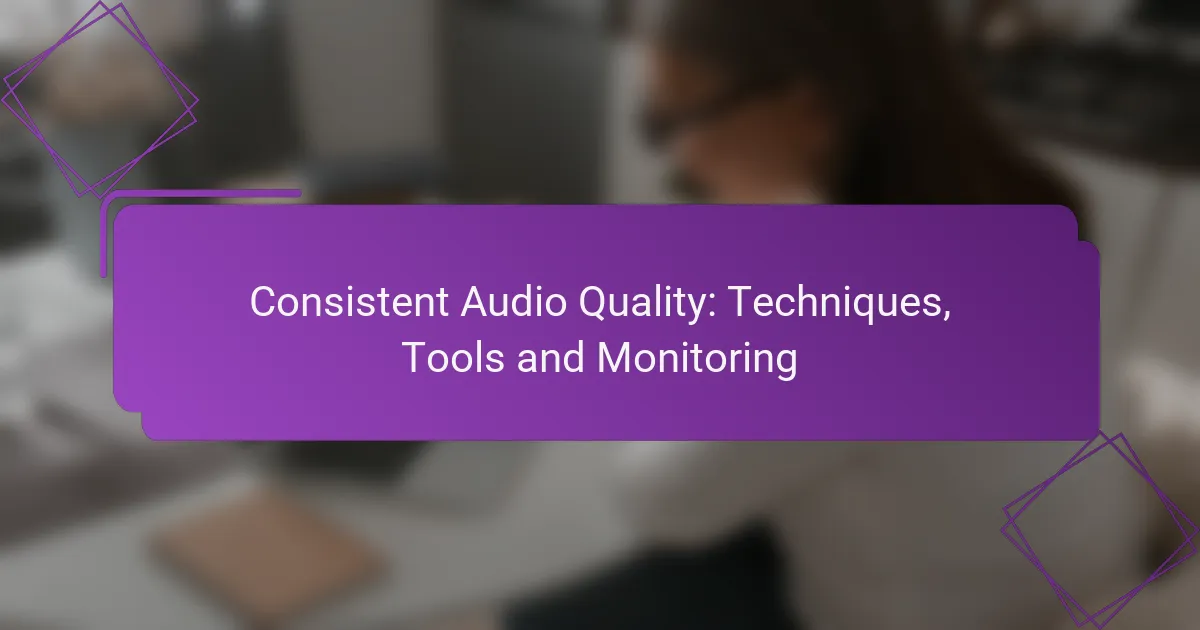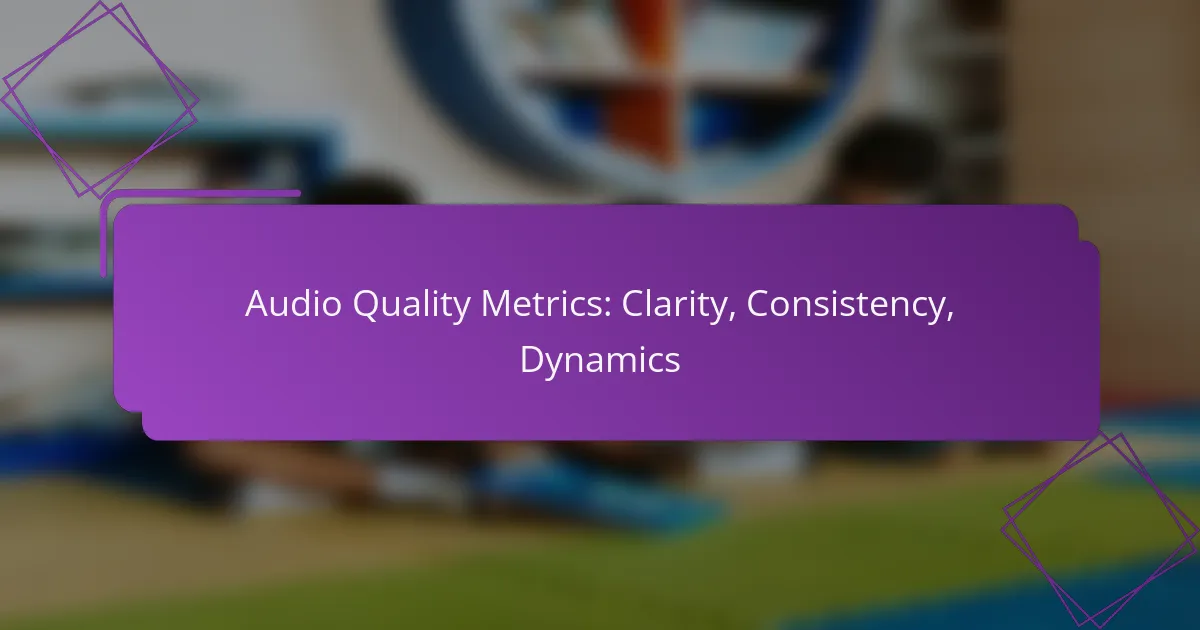When it comes to audiobook distribution, the most effective audio formats are MP3, AAC, and FLAC. Each format presents distinct benefits regarding compatibility, audio quality, and file size, catering to various distribution requirements. While MP3 is universally compatible, AAC excels in sound fidelity, and FLAC provides lossless compression for optimal clarity and detail.

What are the best audio formats for audiobook distribution?
The best audio formats for audiobook distribution are MP3, AAC, and FLAC. Each format offers unique advantages in terms of compatibility, audio quality, and file size, making them suitable for different distribution needs.
MP3 for compatibility
MP3 is the most widely used audio format, ensuring compatibility across virtually all devices and platforms. This universal acceptance makes it the go-to choice for audiobook distribution, as listeners can easily access content on smartphones, tablets, and computers.
When using MP3, consider a bitrate between 64 kbps and 128 kbps for spoken word content. This range balances file size and audio clarity, making it ideal for audiobooks without sacrificing listener experience.
AAC for quality
AAC (Advanced Audio Codec) offers superior sound quality compared to MP3 at similar bitrates, making it an excellent choice for audiobooks that prioritize audio fidelity. It is commonly used by platforms like Apple Music and YouTube, ensuring good compatibility with modern devices.
For audiobooks, a bitrate of 128 kbps to 256 kbps is recommended when using AAC. This range provides clear audio reproduction, enhancing the listening experience without significantly increasing file size.
FLAC for lossless audio
FLAC (Free Lossless Audio Codec) is ideal for audiobooks that require the highest audio quality, as it compresses files without any loss of data. This format is particularly beneficial for audiobooks with complex soundscapes or musical elements, ensuring every detail is preserved.
However, FLAC files are larger than MP3 and AAC files, which may limit their distribution on certain platforms. If using FLAC, consider offering a secondary format like MP3 or AAC for users with limited storage or bandwidth.

How does MP3 compare to AAC for audiobooks?
MP3 and AAC are both popular audio formats for audiobooks, but they differ in support and sound quality. MP3 is more universally compatible, while AAC provides superior audio fidelity, making it a better choice for discerning listeners.
MP3 is widely supported
MP3 is one of the most commonly used audio formats, compatible with nearly all devices and platforms, including smartphones, tablets, and computers. This broad support ensures that audiobooks in MP3 format can be easily accessed by a wide audience.
For audiobook distribution, using MP3 can simplify the process, as most audiobook platforms and services accept this format without issues. This makes it an ideal choice for authors and publishers looking to reach a diverse listener base.
AAC offers better sound quality
AAC, or Advanced Audio Codec, generally provides better sound quality than MP3 at similar bit rates. This means that audiobooks encoded in AAC can deliver clearer and more detailed audio, which is particularly beneficial for long listening sessions.
When considering AAC for audiobooks, it’s important to note that while it may not be as widely supported as MP3, its quality advantages can enhance the listener’s experience. For audiobooks that emphasize narration and sound effects, AAC can be a worthwhile investment.
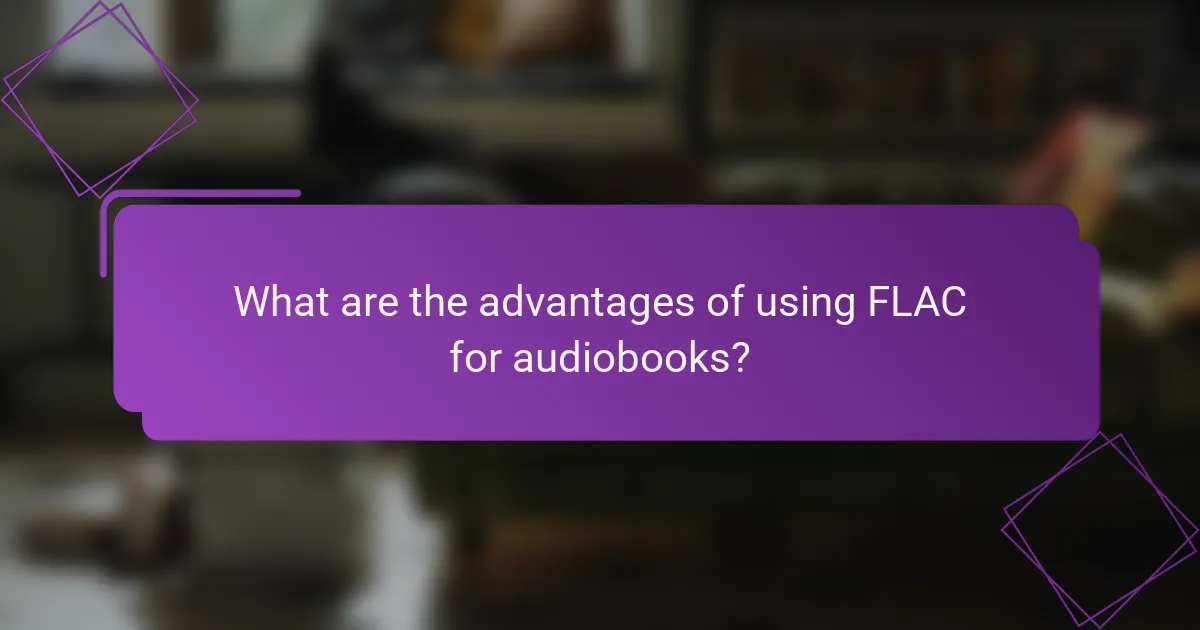
What are the advantages of using FLAC for audiobooks?
FLAC, or Free Lossless Audio Codec, offers several advantages for audiobook distribution, primarily its ability to compress audio without losing quality. This makes it an ideal choice for audiobooks, where clarity and detail are essential for an engaging listening experience.
Lossless compression
FLAC uses lossless compression, meaning that the audio data is reduced in size without any loss of quality. This allows audiobooks to maintain their original sound fidelity while being more manageable in file size. Typically, FLAC files can be compressed to about 30-60% of their original size, making them easier to store and distribute.
When choosing FLAC for audiobooks, consider the trade-off between file size and storage capacity. While FLAC files are larger than lossy formats like MP3 or AAC, they provide a superior listening experience, especially for audiobooks that feature rich soundscapes or detailed narration.
High fidelity sound
One of the standout features of FLAC is its high fidelity sound, which ensures that every nuance of the audio is preserved. This is particularly important for audiobooks, where the clarity of the narrator’s voice and the subtlety of background sounds can greatly enhance the storytelling experience.
Listeners often prefer FLAC for audiobooks because it delivers a more immersive experience. If you are producing audiobooks, consider using FLAC to appeal to audiophiles and those who appreciate high-quality audio. However, keep in mind that not all devices support FLAC playback, so it’s wise to provide alternative formats for broader compatibility.

What factors should you consider when choosing an audio format?
When selecting an audio format for audiobook distribution, consider factors such as sound quality, file size, and compatibility with various devices and platforms. Each format has its strengths and weaknesses, impacting the listener’s experience and your distribution strategy.
Target audience preferences
Your target audience’s preferences play a crucial role in choosing the right audio format. For instance, audiophiles may prefer lossless formats like FLAC for superior sound quality, while casual listeners might prioritize smaller file sizes and ease of access, making MP3 or AAC more suitable.
Understanding your audience’s listening habits can guide your decision. If your listeners frequently use mobile devices or streaming services, formats that balance quality and compression, such as AAC, may be more appealing.
Distribution platform requirements
Different distribution platforms have specific requirements for audio formats. For example, many popular platforms, including Audible and Google Play, accept MP3 and AAC formats, while some may also support FLAC for higher fidelity. Always check the guidelines of your chosen platform to ensure compliance.
Additionally, consider the limitations of each format. MP3 files are widely compatible but may sacrifice some audio quality, while FLAC files offer lossless quality but result in larger file sizes. Balancing these factors will help you meet both platform requirements and listener expectations.

How do different audio formats affect audiobook pricing?
The audio format of an audiobook can significantly influence its pricing due to factors like production costs and market demand. Formats such as MP3, AAC, and FLAC each have unique characteristics that can affect both the expenses incurred during production and the perceived value by consumers.
Production costs vary by format
Different audio formats come with varying production costs. For instance, MP3 is generally less expensive to produce due to its widespread compatibility and smaller file size, making it a popular choice for many publishers. In contrast, FLAC, which offers lossless compression, can incur higher costs due to the need for more storage space and processing power.
When considering production, it’s crucial to evaluate the target audience’s preferences. If high fidelity is a priority for your listeners, investing in FLAC might be worthwhile despite the higher costs. However, for casual listeners, MP3 or AAC may suffice and keep production costs lower.
Market demand influences pricing
Market demand plays a critical role in determining the pricing of audiobooks across different formats. Audiobooks in formats like MP3 are often priced lower because they are more widely accepted and easier to distribute. Conversely, audiobooks in FLAC format may command higher prices due to their superior sound quality, appealing to audiophiles.
Understanding your audience’s preferences can help set competitive prices. If your target market values high-quality audio, consider pricing FLAC audiobooks at a premium. Conversely, if your audience prioritizes accessibility and convenience, pricing MP3 or AAC versions more competitively can attract a broader customer base.
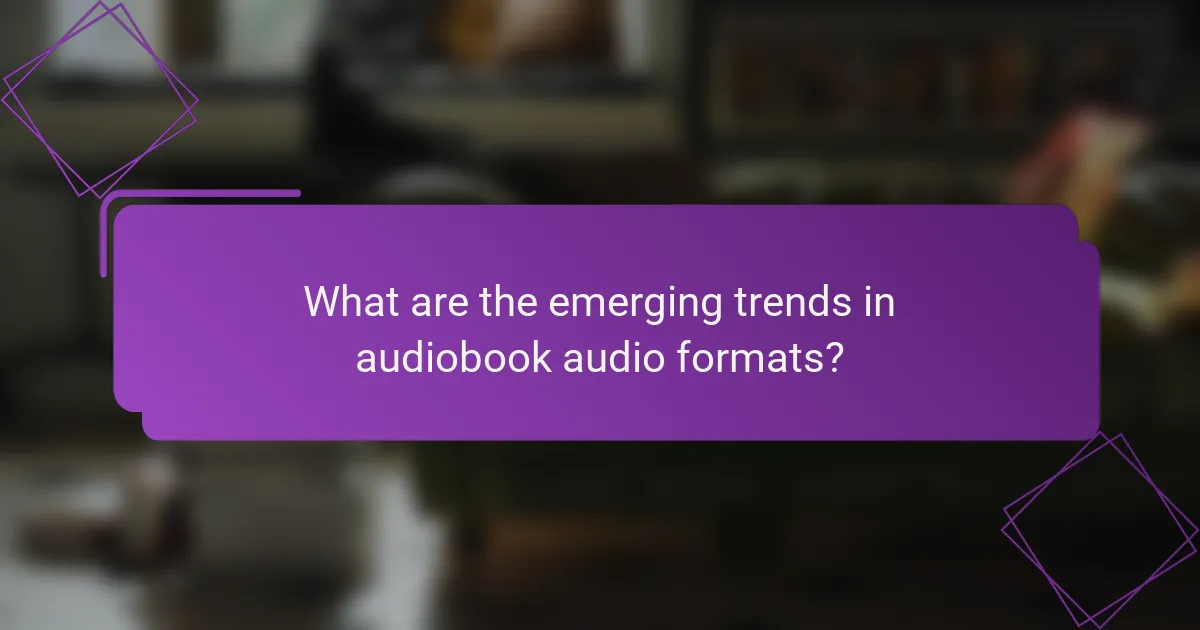
What are the emerging trends in audiobook audio formats?
Emerging trends in audiobook audio formats include the rise of immersive audio experiences, the expansion of subscription services, and the adoption of new audio codecs. These trends are shaping how audiobooks are produced, distributed, and consumed, enhancing user engagement and accessibility.
Increased use of immersive audio
Immersive audio is becoming increasingly popular in the audiobook industry, offering listeners a more engaging experience. This format utilizes spatial audio techniques to create a three-dimensional sound environment, making stories feel more vivid and lifelike.
For example, audiobooks that incorporate binaural recording techniques can provide a sense of presence, as if the listener is part of the narrative. This trend is particularly appealing for genres like fantasy and science fiction, where world-building is crucial.
Growth of subscription services
The growth of subscription services has significantly impacted audiobook distribution, allowing users to access a vast library of titles for a monthly fee. Platforms like Audible and Scribd have popularized this model, making audiobooks more affordable and accessible to a wider audience.
As subscription services continue to expand, they often offer exclusive content and original productions, further enticing users to subscribe. This trend encourages publishers to create more diverse and innovative audiobook offerings to meet subscriber demands.
Adoption of new codecs
The adoption of new audio codecs is transforming how audiobooks are compressed and delivered. Codecs like Opus and AAC provide higher quality sound at lower bit rates, improving the listening experience while reducing file sizes.
For instance, using AAC can enhance audio clarity, especially in environments with background noise, making it a preferred choice for many audiobook producers. As technology advances, staying updated on codec developments can help creators optimize their content for various platforms and devices.
